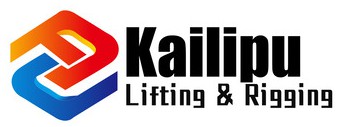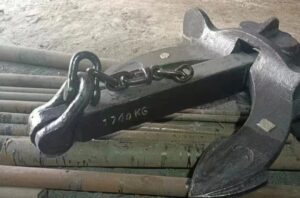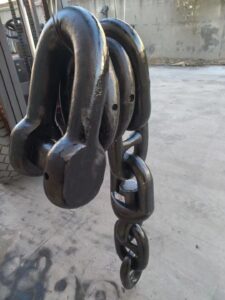Best Marine Mooring System: 10 Essential Components and Supplies
Marine mooring systems are used to keep floating marine structures such as ships, offshore platforms, etc. moored to a specific location. Marine mooring systems play a vital role in operations at docks, ports, or anchorages. These systems play a vital role in the safety and efficiency of offshore operations. Understanding the components and characteristics of marine mooring systems is key for anyone involved in offshore activities. Here, we explore the 10 key components of the best marine mooring systems and why they are indispensable.
The Key Components Of The Best Marine Mooring Systems
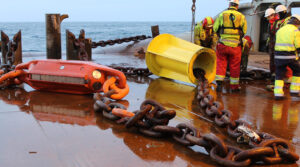
1. Anchors
Anchors are the foundation of any mooring system. They dig into the seabed, providing the necessary holding power to keep the vessel stationary. Popular types include stockless anchors, stock anchors, and specialty anchors like the Danforth or plow anchors, each suited for different seabed conditions and vessel sizes.
2. Mooring Lines
Mooring lines are vital for connecting the vessel to the anchor or dock. These lines come in various materials, such as nylon, polyester, or steel wire, each offering unique properties like strength, elasticity, and resistance to environmental factors. High-quality mooring lines ensure the vessel remains secure under various conditions.
3. Buoys
Buoys serve as floating connection points between the mooring lines and the vessel. They help keep the vessel at a safe distance from the seabed and prevent the lines from tangling. Buoys come in various sizes and types, including cylindrical, spherical, and specialty designs for different marine environments.
4. Chafing Gear
Chafing gear protects mooring lines from abrasion and wear caused by friction against the vessel or dock surfaces. Typically made from materials like leather, canvas, or synthetic fibers, chafing gear extends the life of mooring lines by preventing damage.
5. Fairleads and Bollards
Fairleads and bollards are essential for guiding and securing mooring lines. Fairleads ensure the lines are properly routed, minimizing chafing and entanglement. Bollards, found on docks or vessels, provide strong, secure points to tie off mooring lines, ensuring the vessel remains stationary.
6. Shackles and Swivels
Shackles and swivels are crucial for connecting various mooring components. Shackles link mooring lines to anchors, buoys, and other fittings, while swivels prevent twisting and tangling of lines, especially important in dynamic marine environments.
7. Snubbers and Shock Absorbers
Snubbers and shock absorbers help absorb the dynamic forces exerted on mooring lines by waves, wind, and currents. These devices reduce strain on mooring lines and other components, preventing breakage and extending the life of the entire mooring system.
8. Fenders
Fenders protect the vessel’s hull from contact with docks, pilings, or other vessels. They act as cushions, absorbing impact and preventing damage. Fenders come in various shapes, sizes, and materials, including inflatable and foam-filled options, to suit different types of vessels and docking scenarios.
9. Cleats and Winches
Cleats and winches provide secure points for fastening mooring lines on the vessel. Cleats offer a quick and easy way to tie off lines, while winches allow for controlled tensioning and adjustment of lines, making them essential for managing mooring lines under various conditions.
10. Chain and Wire Ropes
Chain and wire ropes are used in mooring systems for their strength and durability. Chains are often used in conjunction with anchors to provide additional weight and holding power, while wire ropes offer high strength and resistance to stretching, making them ideal for heavy-duty mooring applications.
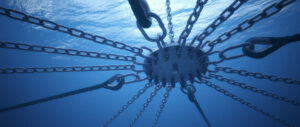
Characteristics of Offshore Mooring Systems
- Strength The strength of a mooring system is paramount to withstand various forces, such as wind, waves, and current. Each component must be chosen to handle the maximum expected load.
- Flexibility Flexibility is essential to absorb the dynamic movements of the vessel caused by environmental forces. Materials like nylon provide elasticity, which helps in dissipating energy and reducing shock loads.
- Durability Durability ensures the longevity of the mooring system. Components must be resistant to corrosion, UV degradation, and abrasion. For example, galvanized steel chains and synthetic fibers treated with UV inhibitors are commonly used.
- Redundancy Redundancy is vital for safety. Using multiple mooring lines and anchors can prevent a complete failure if one component breaks. This is particularly important in harsh marine environments.
- Ease of Handling Mooring systems should be easy to deploy, adjust, and retrieve. This characteristic is crucial for efficiency, especially in emergency situations or during frequent docking and undocking operations.
Types of Mooring Systems
- Single-Point Mooring (SPM)SPM systems use a single buoy or anchor point, allowing the vessel to weathervane around the mooring. This type is commonly used for tankers and offshore platforms.
- Spread MooringSpread mooring involves multiple anchors and mooring lines spread out to different points on the seabed. This provides increased stability and is used for large ships and floating platforms.
- Dynamic Positioning (DP)DP systems use thrusters and onboard computers to maintain the vessel’s position without the need for traditional mooring lines or anchors. This technology is widely used in the offshore oil and gas industry.
Wide Application Areas Of Marine Mooring Systems
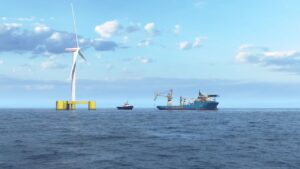
Marine mooring systems play a key role in many important areas.
In offshore oil and gas extraction, it is the “mainstay” to ensure the stability of offshore drilling platforms and production facilities. The mooring system allows these large structures to operate safely in harsh sea conditions and ensure the continuous output of energy.
For marine engineering ships, the mooring system enables them to be anchored steadily in specific sea areas, whether for marine scientific research, seabed exploration, or various types of engineering construction.
In the field of offshore wind power generation, the mooring system supports huge wind turbines, allowing them to continue to generate electricity under the breeze and provide us with clean energy.
Ports and docks are also important “stages” for marine mooring systems. The berthing of various ships and the loading and unloading of cargoes are inseparable from reliable mooring guarantees.
In addition, in some marine scientific research bases and marine observation stations, the mooring system ensures the stability of the facilities for long-term data monitoring and scientific research.
Even in some special marine military applications, the mooring system has a place to ensure the safe deployment of military facilities and ships.
Conclusion
Investing in high-quality components and supplies is essential for building a reliable and effective offshore mooring system. Each component plays a vital role in ensuring the safety and stability of the vessel, from anchors and mooring lines to fenders and winches. By understanding and utilizing these 10 essential components, maritime professionals can create mooring systems that withstand the demands of various marine environments, ensuring the safety and efficiency of their operations.
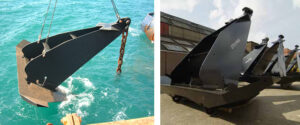
Anchoring Trust with Quality: Your Premier Source for Professional Marine Mooring Supplies in China
As a leading supplier of professional marine mooring supplies in China, we are committed to delivering the highest quality products that ensure the safety and stability of your vessels. Our extensive range of mooring equipment, including durable anchors, chain and wire ropes, shackles, and reliable rigging and lifting equipment, is designed to withstand the harshest marine environments. We pride ourselves on our rigorous quality control processes, innovative design solutions, and exceptional customer service. By choosing our supplies, you are investing in the reliability and performance that maritime professionals worldwide trust and depend on.
Browse our website or contact our team at [email protected], Kailipu will work with you to make better marine mooring accessories components.
